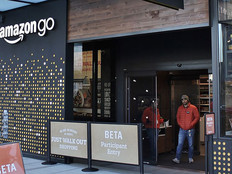Why Retailers Must Be More Efficient to Compete with Digital Players
Contrary to gloom-and-doom headlines, the growth of online retail has not signaled a death knell for traditional stores. Studies show that brick-and-mortar sales still account for the bulk of retail transactions. For example, in its "2018 Retail Transformation Study," IHL Group says the notion of a "retail apocalypse" is unfounded, noting that in-store sales increased by between 4.2 percent and 5.4 percent in the previous year, with another 4.8 percent bump expected in 2018.
However, it is true that online retailers are putting pressure on traditional stores to operate more efficiently while delivering the best possible customer experience. Although the IHL Group study says that traditional retail continues to dominate the market, it also notes that online sales are growing two to three times as fast as in-store sales, with mobile e-commerce the fastest-growing channel of all.
SIGN UP: Get more news from the BizTech newsletter in your inbox every two weeks!
Tech Can Improve the Retail Customer Experience
In the past, people essentially had to shop in brick-and-mortar stores. Today, retailers must make the shopping experience compelling enough that customers want to spend time browsing their aisles. This pressure creates an enormous opportunity for retailers to learn more about their customer base and to forge more meaningful, valuable relationships with shoppers, but it also presents a significant challenge. It's one thing to collect data on shoppers; it's another to take an individual's age, gender, location and buying history, and then tailor for them a personalized shopping experience.
Customer experience may seem at first glance to be a "soft" business benefit, but it has serious consequences for the bottom line. In "A Roadmap to Digital Value in the Retail Industry," Cisco estimated that the customer experience accounted for $91 billion out of a total of $506 billion in value that retailers could generate between 2016 and 2018 through digital transformation efforts.
These efforts include the deployment of features such as in-store analytics, interactive kiosks, mobile payment acceptance, self-serve channels, endless aisles and smart lockers. The potential benefits tied to the customer experience include increased upsell opportunities, more customer engagement and reduced friction between online and in-store experiences. But the report estimated that retailers are realizing only 15 percent of this digital value — meaning that the industry is leaving hundreds of billions of dollars on the table.
Retailers Must Invest in Innovation to Meet Shoppers' Demands
One pain point that is driving many retailers to embrace data analytics is inventory management. The rise of omnichannel has given retailers a powerful tool to compete with online-only outlets, but it has also complicated processes for delivery, fulfillment and inventory.
Another driver is the need to stay relevant in the eyes of customers. In a 2017 International Council of Shopping Centers survey, more than half of customers said they expect to see a variety of smart systems in stores by 2020. Shoppers envision tools that will enable them to find out if products or sizes are in stock without asking a salesperson and to input their shopping lists to store apps, which will then give them a map to help them easily locate products.
Customers still want to shop in brick-and-mortar stores. But as time goes on, the bar for what they consider an attractive, valuable shopping experience will only continue to get higher. Smart solutions can help retailers position themselves for success in this evolving marketplace.
Learn how to craft a smarter retail strategy by reading the CDW white paper, "Smart Retail Powers Data-Driven Insights."







